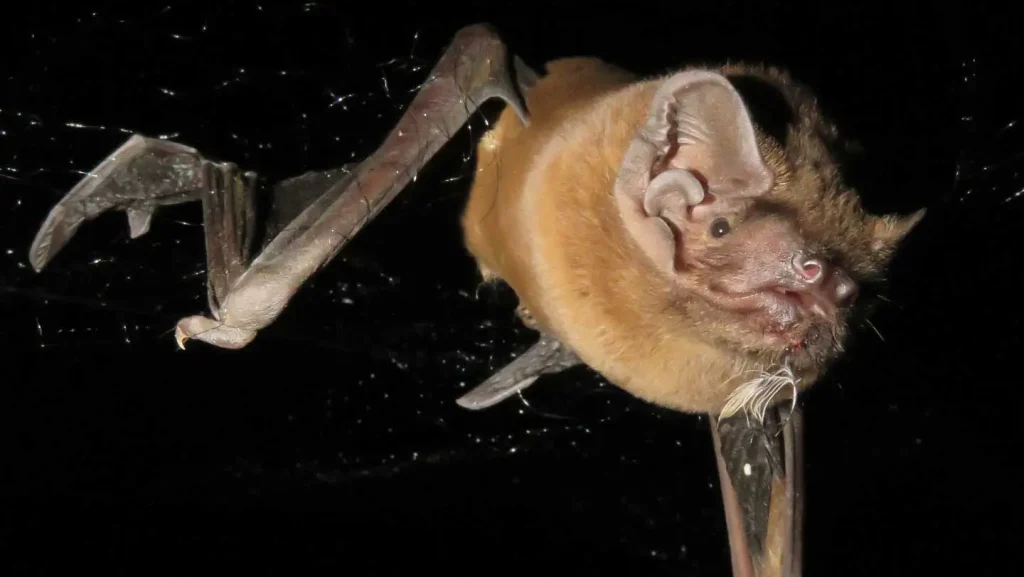Midnight Hunters: The Bat Species That Preys on Migrating Songbirds
While vampire bats may be the stars of Halloween lore, researchers have discovered another bat species with equally chilling hunting habits. Europe’s largest bat, the greater noctule (Nyctalus lasiopterus), has been confirmed to capture, dismember, and consume migrating songbirds in mid-air, making for a truly remarkable predator-prey relationship in the night sky.
Scientists had previously detected songbird DNA in the guano of three bat species, suggesting these flying mammals consumed more than just insects. However, understanding exactly how bats hunt birds presented a significant challenge, particularly because these interactions occur high in the darkness of night. To solve this mystery, a research team led by bioacoustician Ilias Foskolos from Denmark’s Aarhus University equipped greater noctules with sophisticated biologgers. These cutting-edge devices incorporated multiple sensors: accelerometers to track three-dimensional movement, magnetometers to record direction, altimeters to measure altitude, and microphones to capture audio of the hunting process.
The data collected from these devices offered unprecedented insights into the bats’ nocturnal activities. Elena Tena, a bat conservationist at Doñana Biological Station in Spain who participated in capturing and tagging the bats, described the audio recordings as giving the sensation of “flying with the bats.” The team could hear the flapping of wings and even ambient sounds like frogs calling as the bats traversed the marshes of Doñana. More importantly, the microphones captured feeding buzzes—sounds emitted as the bats approached their prey—followed by chewing sounds that indicated successful hunts. Among the 611 hunting events recorded, most involved insects near the ground, but two particular events revealed their remarkable bird-hunting strategy.
In these two notable instances, the bats flew to extraordinary heights—more than 1,200 meters up, actually exceeding the altitude of migrating songbirds. From this superior position, the predatory bats would identify their avian prey and begin their approach. What makes these bats particularly effective hunters is that their high-frequency echolocation calls are inaudible to birds. The songbirds only realized they were being hunted at the last moment, likely when they felt the bat’s touch or heard the sound of its wings. According to Foskolos, the birds attempted evasive maneuvers such as dives and spirals, but the bats pursued them in steep vertical descents.
While one bird managed to escape near the ground, the other wasn’t so fortunate. The biologgers captured the bird’s distress calls followed by a remarkable 23-minute feeding session, all while the bat remained airborne. “The bat was flying normally because of the accelerometer data, and chewing and echolocating at the same time,” Tena explained. “Sometimes you could hear that it must be biting bone.” Part of the bats’ feeding process apparently involves removing wings from their avian prey. The research team occasionally observed wings falling to the ground during bat captures, and DNA analysis of wounds on these wings confirmed they came from greater noctule bites. Furthermore, bats caught in nets sometimes had red-stained lips and feathers hanging from their mouths—grim evidence of their feeding habits.
Despite this breakthrough in understanding how greater noctules hunt birds, Tena acknowledges that much remains unknown about this species. This study, published in the October 9 issue of Science, represents a significant advancement in understanding the greater noctule’s ecological role as one of Europe’s top aerial predators. As Danilo Russo, a bat ecologist from the University of Naples Federico II who wasn’t involved in the study, noted: “Using these high-tech approaches, the Science paper is the first to track the hunting maneuver of a greater noctule chasing and catching a robin… this study provides compelling evidence that birds are caught in flight.”


